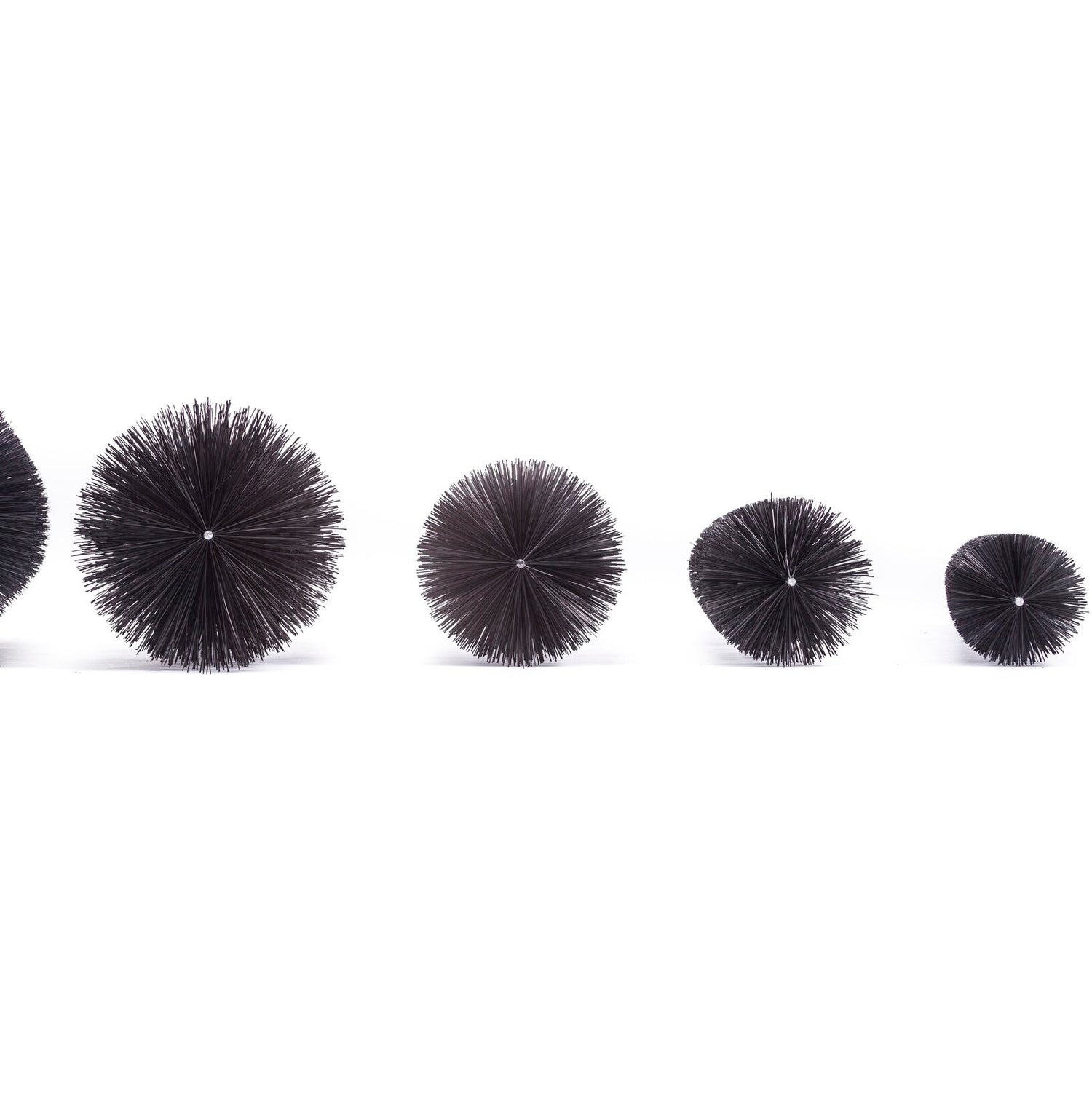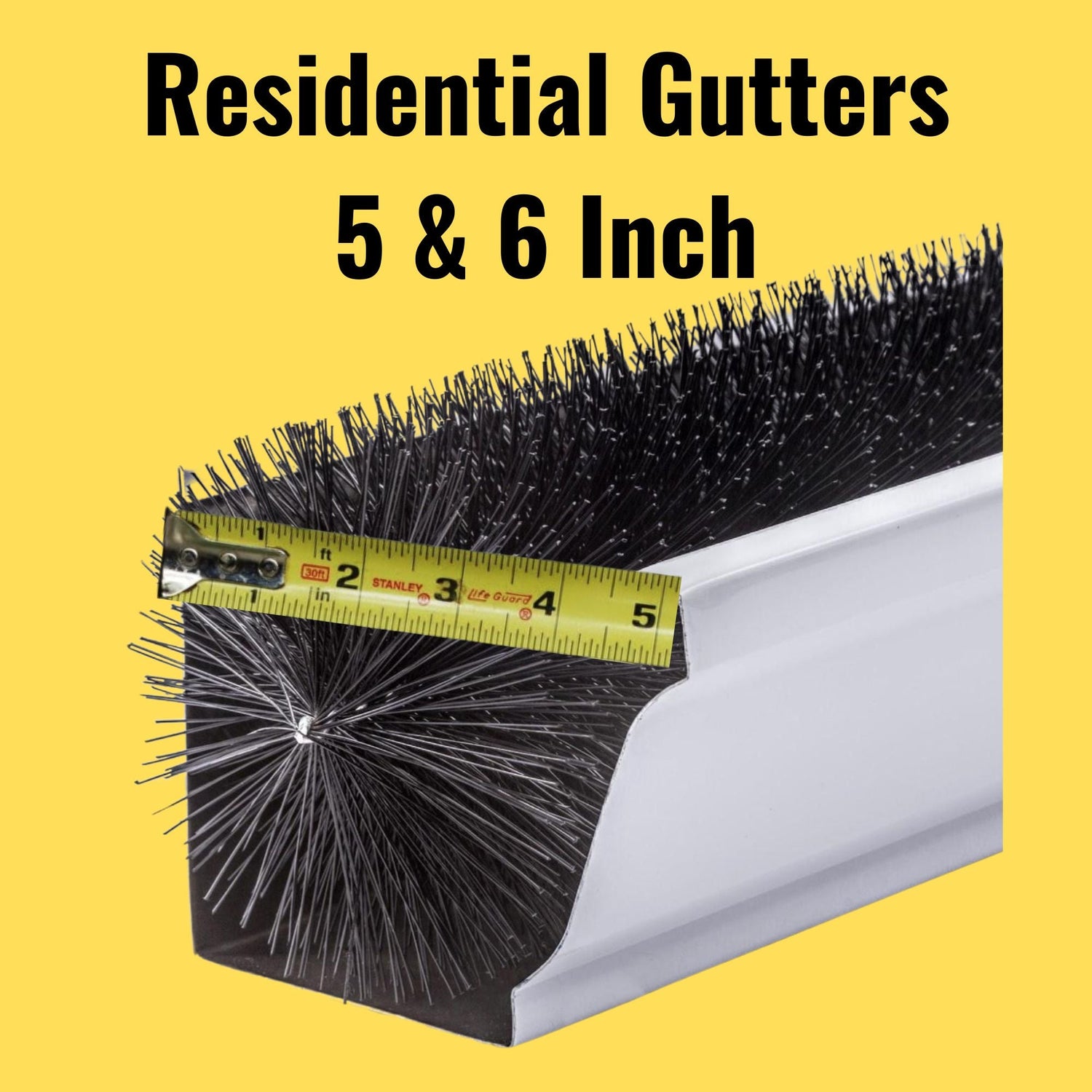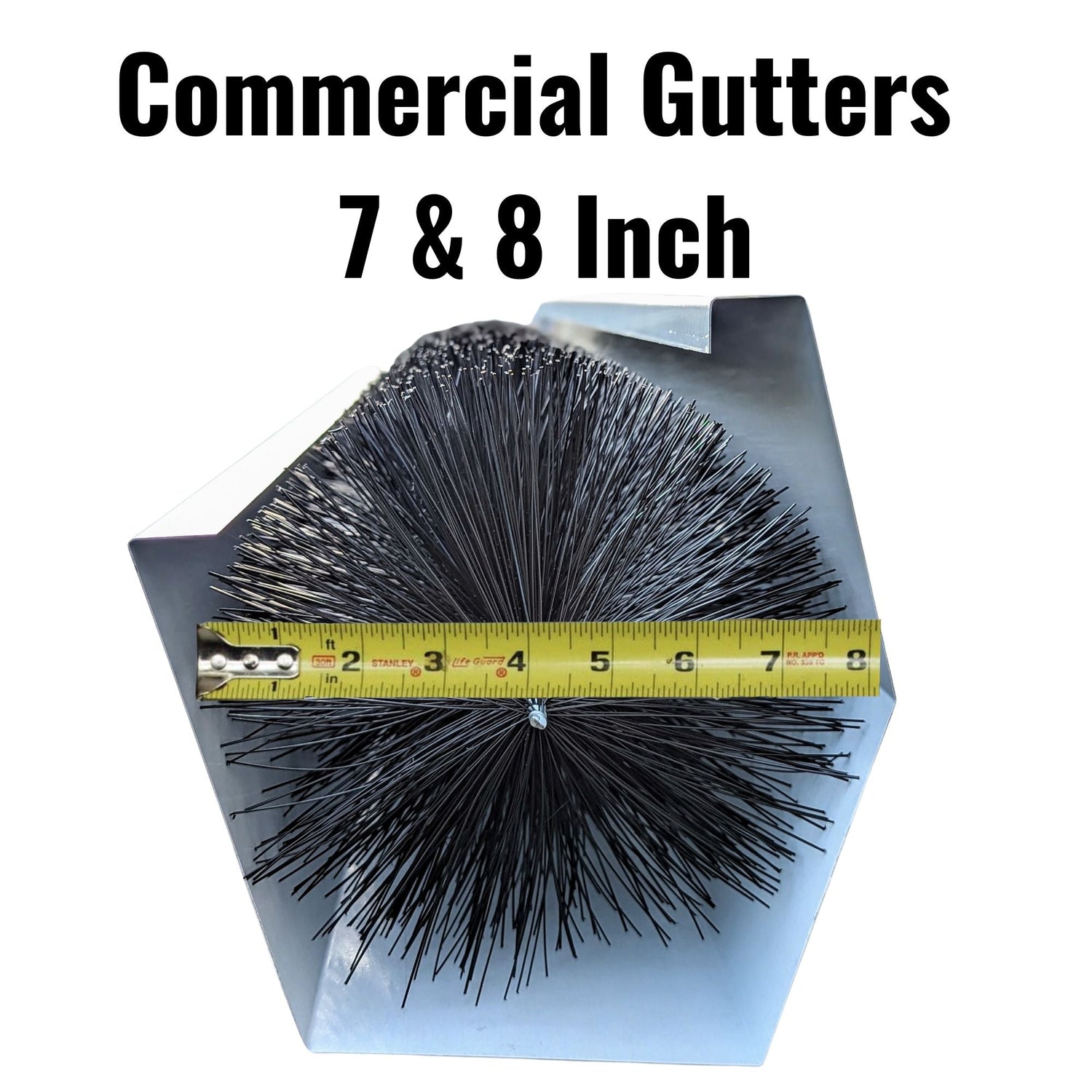Did you ever notice that when your gutter or downspout clogs with leaves and debris from the roof, it generally happens in the same way every time and the gutter downspout overflow happens at the same place every time. These repetitive homeowner problems feel like insanity. Homeowners are extremely busy these days with cell phones, social media and devices constantly tugging at their shirt strings, people do not have any free time these days no less problems that seem to occur over and over. One definition of insanity is to do the same thing over and over and expect different results. If you are like most people, your gutters clog regularly and you just head on up the ladder to clear the clog hoping the problem will be solved for a good long while. Unfortunately, without some sort of long term solution, that is insanity because with trees growing every year there are exponentially more leaves available to blow into your gutters every year if you do not hire someone to prune the trees. One year, the gutter may not clog at all but since trees grow from the outer tip, tree growth and leaf production increases exponentially year by year so if that gutter only clogged twice last year there is a good chance it will clog 3 or 4 times this year and even more next year. Before I go on and write more about this common, but ever increasing problem, feel free to jump to the head of the line and take a look at a very simple solution to gutter downspout overflow from clogged gutter downspouts.
Gutter Downspout Overflow at the Same Place Every Time
Its not such a mystery as to why the gutter overflow might occur at the same place every time. The main reason for this is because the downspouts are typically located intentionally at a low spot in the gutter. Another way of saying this is that the gutter is supposed to slightly slope towards the downspouts, therefore they are located at the lowest spot in the gutter; therefore it stands to reason that the gutter would pour over at that same low spot during most clog occurrences, regardless of the reason for the overflow.
Obviously, none of us find it desirable that the gutter downspout overflows, because the water cascades over the side of the gutter and can cause splashing and repetitive wetness of expensive home features. Features like trim, moldings, windows and soffit are expensive to have carpenters come and repair, so we do not want these valuable and beautiful home features being soaked from rain any more than necessary. The gutters are one of the reasons these features last a long time, and when they clog they cause these features to deteriorate from rot and bugs. If not damaging the home's features, the gutter downspout overflow can cause damage in different ways such as damaging the foundation, leaking water into the basement, undermining the soil under the basement floor, and washing away landscaping.
Gutter Downspout Overflow Occurs in Three Ways
Gutter downspout overflow causes the gutter to pour over at the same spot each time, because there are only 3 general ways that gutters clog, so natural physical properties denote that the occurrence of a clog will be similar each time. The good news is that due to the physical properties, there are some easy ways to rectify the repetitive clogging problem.
Clogged Gutter Downspout Causes Gutter Downspout Overflow
The purpose of gutters is to collect the rainwater and safely channel the rainwater away from the building so that it can do not harm to the structure, siding, trim windows or landscape. The downspouts are the pipes that carry the rainwater from the gutter; they are also referred to as leader pipes. From my 25 years as a contractor, I always said that if you want to install a very good and functioning gutter system, then also provide or install plenty of drainage. Gutter installers often skimp on the number of drainage pipes or downspouts just to save money, but adding extra drainage pipes is a great way to improve your gutter system, decrease clogs and overflow, and also decrease the amount of maintenance that the system will need to keep functioning and flowing properly. When you starve a gutter system for drainage, you really are not giving it much of a chance for success. Having extra downspouts is a great idea; it's like having a belt to hold up your pants but also a pair of suspenders if the belt breaks. Extra downspout gutter drainage is a great way to keep your gutter system flowing properly even if there is a problem you do not know about or a blockage up there. Obviously, one of the main reasons that your gutter will overflow is if or whenever the downspout clogs. When the downspout clogs, the gutter water has no place to go so the gutter fills up and overflows. Clogged gutter downspouts are one of the three main reasons why gutters overflow. Clogged gutter downspouts usually begin at the elbows and I explain more about that later in this article.
Gutter Downspout Overflow Caused by a Gutter Dam or Blockage
Gutter Downspout pour over can occur from one of three ways; one is that the downspouts or downspout elbows have clogged, the other two ways are the two ways that gutters clog
Two ways Gutters Clog and Cause Gutter Overflow- Gutter Dam or Blockage
- Gutter Downspout Outlet Blockage
Lets Deal with each of the above ways gutters pour over one at a time.
Gutter downspout Overflow caused by a gutter blockage or dam, is one of the ways that gutters clog and cause gutter downspout pour over. When a gutter is not protected from gutter leaves and debris, the leaves and debris naturally enter the gutter after they fall on the roof and roll down the roof or flow down the roof from a rainstorm. The leaves and debris generally lay on the bottom of the unprotected gutter. Light rain can occur and it usually leaves the debris as-is without causing a clog but as soon as there is heavy rain, the gutter fills up with water and begins to float and flow the gutter leaves and debris. Again, usually this debris just lays there during a light rain, but when it rains heavily, the level of water in the gutter rises and begins to have flow volume toward the downspout, therefore the new rain flow lifts the leaves and debris and the debris begins to flow down the length of the gutter towards the downspout. Usually, as the gutter leaves are floating along like an inner tube down a lazy river, there is a twig or some other piece of debris that for some reason gets hung up. Once the twig or piece of debris gets hung up in one place, the next piece of debris comes along and bumps into it so now you have two pieces of debris hung up. A third and a fourth leaf come along and add to the pile up and all of a sudden you have a partial blockage that is now firmly stuck. Sure, as it rains lots of water is flowing by but as time goes by one piece of debris after another is being deposited onto the blockage and the blockage is now achieving a fairly strong foothold. Eventually, the blockage naturally grows to a point where it affects the flow and causes the storm water to overflow the edge of the gutter.
Gutter Outlet Tube Plug Causes Gutter Downspout Overflow.
This phenomenon is a little different from the blockage explained above although it begins in a similar way. Before I begin, check out this video that shows that only a small amount of very small gutter debris can clog your gutter and cause downspout overflow. After viewing the video, you will see that the point is that even very small debris that is smaller than the gutter downspout outlet can cause an outlet clog. This surprised me! The important question is as follows. “If each individual piece of debris is very small and if each individual gutter leave and piece of debris is small enough to fit down the downspout outlet, then how could those small gutter leaves possibly ever cause a clog? Here comes the answer.
How can very Small Pieces of Debris cause a Gutter Outlet Overflow?
As described above, even very small pieces of debris can clog your gutter downspout outlet even though each individual piece of debris can fit down the outlet tube. The small pieces of gutter leaves and debris ( or larger leaves) lay on the bottom of the gutter. Then, along comes a rainstorm that increases in volume all of a sudden. The gutter water rises to a high level and floats all of that debris as one solid clump. Even though the clump consists of smaller pieces of debris, the rain water level rising all at once lifts the entire mass of gutter leaves off of the bottom of the gutter all at the same time. That mass of smaller debris is now acting as one solid clump and the entire clump begins to floor toward the downspout like an inner tube on a lazy river, except that the clump is acting as if it has properties of its own. Sure the entire clump is made of smaller pieces of debris, but the water level rose very quickly so the entire clump is flowing towards the downspout outlet with some strong velocity. The entire clump reaches the downspout outlet all at once and the entire clump is far larger than the gutter downspout outlet so it can not all fit through the opening and down the downspout. So the clump can not fit down the hole so it lodges itself in the gutter outlet tube while water continues to seep through. Every pint of water that seeps through the clog brings with it more and more small pieces of debris that also can no longer make its way through, so with every pint of gallon of water that tries to make it through, the clog becomes denser and denser with a stronger hold as time passes. Often, people will try to keep debris from entering the downspout by installing a downspout strainer, check out this article about how downspout strainers can actually cause gutter overflow and way too much maintenance.
Clogged Gutter Downspout Elbows
As described above, most of the time the gutter outlet clogs because a larger plug of debris has clumped together and flown down the gutter to create a larger plug that can not fit down the downspout. However this is not the same as when the downspout itself clogs. When I refer to debris clumping and flowing to clog the gutter outlet, that is a gutter clog and one of the two ways that gutters clog 1) Debris clumps, flows and creates a larger plug that clogs the outlet and 2) Debris flows and piles up creating a dam or blockage across the gutter. When I speak of the main ways that downspouts clog, I am generally referring to the fact that downspouts almost always clog at the gutter downspout elbows. I followed up on many gutter downspout clog calls in my 25 years as a roofer and gutter cleaner, and I learned that whenever a downspout clogs it is almost always at the elbows and not usually at the straight section of pipe.
Gutter Downspout Elbows Clog In two ways.- Gutter Downspout Elbows clog due to the lack of slope
- Gutter Downspout Elbows Clog from the Crimped Male End
At the area where the gutter sends the water to the ground, the gutter must transition to the downspout. The gutter outlet is installed in the gutter so that the downspout can be attached to the gutter and also to assure that the water flows into the leader pipe. The downspout or leader pipe usually gets fastened to the side of the building but the gutter is installed up against the fascia which is at the leading edge of the soffit, therefore gutter downspout elbows are needed to transition the pipe from the side of the home to meet the gutter outlet. Typically, opposing offsetting elbows are used and two of those elbows brings the leader pipe from the gutter over to the siding where it can be attached. Therefore the 2 gutter downspout elbows have an area where the two elbows meet and this area usually has very little slope. Gutter downspout elbows often clog due to the lack of slope where the two elbows meet. With certain downspout elbows, the area where the two elbows meet is practically horizontal. Horizontal portions of pipe provide lots more opportunity for debris to get stuck and cause a downspout elbow clog. Additionally, elbows are crimped at the male or lower end. They need to be crimped so that one downspout elbow will fit into the other. At the areas where the downspout elbows are crimped, they are smaller than the rest of the elbow and that smaller area provides one more reason for gutter leaves to get hung up and cause a downspout elbow clog.
Techniques To Stop Gutter Downspout Clogs and Gutter Downspout Overflow
Once you understand the 3 reasons how gutters clog, you can understand the simple technique that provides the remedy. In order to stop gutter overflow you need to solve the following.
- Stop Debris From Entering the Downspout
- Stop Gutter Leaves and Debris from Clumping Together to make a larger plug
- Stop gutter leaves and debris from flowing to create a blockage or a dam.
The Easy Gutter Downspout Overflow Solution Technique.
It is easy to stop debris from entering the downspout and clogging at the gutter downspout elbow, simply lay an 18 inch piece of Gutterbrush over the gutter outlet tube. To stop debris from clumping together to make a larger plug that flows and clogs the downspout; and to stop debris from flowing to create a blockage or a dam, just fill the entire gutter with 3 foot lengths of GutterBrush and leave it in place. Gutterbrush is available in 5 different diameters so they have a flexible brush that will fit and fill any gutter. It is very easy, simply slide 3 foot lengths of Gutterbrush into the gutter and fill the entire gutter and leave it in place to keep the gutter and the gutter downspout elbows from clogging. This solution has been providing customers with a clog free system for 20 years and it is made in the USA. Visit www.gutterbrush.com to learn more, or just give the folks at Gutterbrush a call at 888-397-9433. GutterBrush is a very simple system, they have someone standing by during Eastern Standard time to receive your call; or , you can email them at info@gutterbrush.com




